If You Really Loved Me Read online
Page 21
But he did come to see her occasionally on the every-other-Saturday visitors' day at Ventura School. He explained to Cinny that his deteriorating health made it hard for him to make the drive often. If the weather was hot, he wouldn't be able to stand the long drive. He might hemorrhage. He might pass out.
She believed everything he said.
Every time he left after a visit, Cinnamon worried that she might never see him again, that he might really die as he always hinted he would. Her feelings were so mixed up about her father. For so long, he was the only magical person in her life. Her mother worried about even normal, everyday things. Her father just wanted to have fun. When he made her laugh—ever since she was little—they had so much fun. Even when he was sick, he took care of her, and of so many other people. He was smart and he was rich and people respected him.
When he did come to see her, he was still funny and made her laugh, but the visits seemed to be over before they even came close to talking about the things that worried her. There were certain subjects that spooked him, and he either ignored her questions or told her, "I'm working on it. I'm contacting lawyers—investigators. You'll be out of here soon."
She believed him.
Although David didn't come to see Cinny often, he did keep her commissary fund supplied with money, and she was allowed to order items by mail and charge them to his business accounts.
Cinnamon's first psychological screening tests at Ventura took place in November 1985. The diagnosis was as vague as it could possibly be: "unspecified mental disorder— nonpsychotic." In layman's terms, the examiner thought that there was probably something wrong with Cinnamon Brown, but she wasn't crazy. He went on to say she was not a danger to others, but that she might be dangerous to herself; that was unpredictable. Psychotherapy was recommended.
As always, there was little information for any examiner to go on. Cinnamon's memory was apparently lost in some abyss in her own mind.
The psychiatrist found Cinnamon to be a cooperative, friendly young woman who was adjusting well to being incarcerated. She was adamant that she was not interested in psychiatric help.
"Although subject has no memory of the events [of the crime], she somehow feels she is not guilty—and will eventually be proven innocent."
One thing was obvious; Cinnamon didn't want any psychologist or psychiatrist poking around in her subconscious, trying to bring up memories. She seemed almost alarmed at the thought of it.
Each year, near Christmas, Cinnamon would go before the parole board. She didn't really expect to be paroled that first year; she had only just got there. It was a mere formality when she went before the board on December 12, 1985.
Parole denied. The "ward" would be retained in the CYA system for treatment and training; "recommend psychiatric and psychological examinations and reports at each annual review."
Her parole date was tentatively set as September 1992. Seven years away.
Cinnamon had told the examiners on the board that she had no involvement in her stepmother's murder. She also told them that she remembered nothing of the early morning of March 19 or the days following.
There was a question in the examiners' minds about the possibility of conspiracy involving "other family members." They found Cinnamon to be "not criminally sophisticated" and noted that "she appears emotionally immature."
She was fifteen. It seemed a given.
They recommended therapy for an extended period of time. They gave her no "good time" at all.
On January 6, 1986, Cinnamon appeared once again for review. As in her first review with the parole board, the examiners felt that she was not dealing with her offense, and that she needed extended psychiatric treatment. The problem was that Cinnamon still absolutely refused treatment. She had a blank spot in her memory, and she wanted it left that way.
Cinnamon was only one of 1,100 boys and girls locked up in Ventura. The campus was green and dotted with trees. Cinnamon lived in a "cottage" called El Toyon. " 'E.T.,' " she explained. "It's for the younger girls, fourteen to eighteen. I had my own room at the end of the hall. Our cottage held fifty girls. I was trusted and placed at the end. ... I had my bed with my old beach towel across it. I had a desk and shelf across from my bed, and also a tall, thin locker and a sink and toilet.
"I've always been very neat—clean, picky. I guess everything was organized. I had a color TV, Walkman, and bear pictures on my wall, and frames with pictures of my family. I had a lot of things. ... I was very comfortable; I enjoyed my room. I had quality time alone. But the funny thing about my room—my things looked new because I took good care of them. I always had all the material things I needed. Staff would normally not allow such a thing, but because I was on good behavior, I was allowed to have the things I did and in the quantity I did.
"I also had pink curtains on my windows to cover up the bars. Eight bars down and three bars across. I could open a portion of the window myself. Our doors were always locked at night for security reasons. Mail was pushed through the door during the night."
Cinnamon did well in school, and in her cottage. During her first two years at Ventura, she was assigned to the kitchen and cooked and served food to the girls in E.T. cottage. Breakfast at seven, lunch at noon, and dinner at five. She could go to canteen every two weeks, and have visitors twice a month. "Security" escorted all her movements inside the school.
School officials noted that Cinnamon did not align herself with any of the gangs at Ventura. The Caucasian girls urged her to come into the "White Car," their slang for the white girls' gang. She declined. She was something of a loner, doing her time, and waiting. She seemed always to have that air of waiting about her, as if she truly believed that someone—or something—was coming for her soon.
Cinnamon remained sweet, somewhat naive in manner, and was easy for prison officials to deal with. But she could not—or would not—remember the murder night. Until she did, prison officials thought she would not get well or move toward freedom.
In one sense, it almost seemed that Cinnamon felt safer in prison than she had on the outside. At least, she was no longer being bounced back and forth between her mother and father. She had her room, her private space, albeit with a locked door and a window with eight bars down and three bars across.
20
On April 19, 1986, David Brown purchased a second piece of property, an investment. He bought a house at 1510 East Lincoln in Anaheim. He moved Alan Bailey in, with only a sleeping bag for furniture. Alan slept there to protect the property from vandals and break-ins. Jay Newell checked the place out from time to time, but David never moved in. The place was located in a commercially zoned area, and David had obviously seen the possibility of a quick turnover.
He was right. He sold the Lincoln property within months for a $15,000 profit.
In the summer of 1986, although she was completely unaware of it, Cinnamon Brown had a new stepmother, Patti Bailey.
"He asked me to marry him because he knew he was dying," Patti would recall. "Then Krystal would be all alone when he was gone. If she had a stepmother, he could die without worrying about her. As his legal wife, I would have no trouble getting custody of Krystal."
It was not the most romantic proposal in the annals of love—but it succeeded. Almost any proposal would have; David was the only man Patti Bailey had really ever known. She had loved him for her whole life, or so it seemed to her. She was delighted to become the sixth Mrs. David Arnold Brown.
When asked about his sixth marriage, David snorted at Patti's recall and insisted his sixth marriage was not legal, nor was it ever intended to be. His reasoning was either a prime example of David Brown's confabulation after the fact, or as he swore, the "honest-to-God" truth.
"Go look in the records," he said. "If you give false information on the application, then the license isn't valid and the marriage isn't valid. Patti and I both deliberately lied on the application. We only got married as a favor to a friend of Patti's who was pregnant. The
gal—Dee Ann* — begged me to suggest to her boyfriend, Tony*, who was a friend of mine, that we all four go to Vegas and get married. She was upset, naturally, and kept coming over, and she just begged me to do it, so I pulled the guy aside and talked him into it. I never intended to marry Patti.
"Tony and I each paid three hundred dollars to get a prenuptial agreement from the same lawyer. Same form and all; we just filled in our own stuff."
If David never intended to marry Patti Bailey legally, he certainly went to great pains to separate their property. David's half of the prenuptial agreement, signed by Patti, stipulated that—should they ever divorce—David would get:
Real property at 3823 E. Summitridge Lane, Orange, California—with a current equity of approximately $480,000.
The business known as Data Recovery . . . and proceeds of employment of David A. Brown.
IRA accounts, savings account, checking account . . . with a current balance of over $ 150,000.
All furniture and furnishings . . .
1986 model 560SL Mercedes-Benz.
1986 Ford Bronco.
1986 Honda Accord LX.
1985 Honda 500 Shadow motorcycle.
Two 1985 Honda Odysseys with trailer.
Rare coin and paper money collection, currently valued at $350,000.
Dali Women Rising painting, valued at $12,000.
Rockwell Old Man and the Sea painting, valued at $12,000.
Variety of lithographs and original artworks, valued at over $10,000.
Oriental ivory and jade sculptures, carvings, and artwork, valued at over $30,000.
Russell bronze and marble sculpture entitled It's Not Meat Until It's on the Table, valued at over $500,000.
Future proceeds from personal injuries sustained in November 1985 automobile accident.
Patti's list of assets was shorter:
1955 MG.
Future proceeds from personal injuries sustained in November 1985 automobile accident.
Future proceeds from personal injuries sustained in September 1983 automobile accident.
She didn't care. She signed the document eagerly on June 30, 1986.
It was not exactly a romantic madcap jaunt to Vegas. One bride was pregnant and queasy, and the other obeyed her groom like a robot, almost scared to breathe for fear David would change his mind. They left for Nevada on July 1, 1986, Patti Bailey's long-awaited wedding day.
"So we went to Vegas," David continued to explain, "and Patti and I falsified whatever we could, everything that wasn't on our driver's license, so we wouldn't really be married. See, it couldn't be a commonlaw marriage either— because Patti was my dependent—not my wife. So, even if she'd lived with me all that time, it wasn't like she was a wife."
The two couples got into the long line—what David termed a "production line"—and were married in the We've Only Just Begun wedding chapel by the Reverend George M. Stover, ordained minister of the Abundant Life Christian Center. There was no reception, and no announcement to friends or even immediate family.
"Afterward we ate at Caesars Palace—or maybe the MGM—Dee Ann was one of these 'yuppies' who had to have Chinese food with sushi, and Patti got sick as a dog."
That made two brides who were feeling miserable.
And so they were married—"but not really," according to David, who smiled slightly as he related how Patti's "wedding day" was ruined by food poisoning.
Las Vegas was David Brown's preferred wedding locale, just as the Orange County Courthouse was where he got all his divorces.
"I knew we weren't married," David said. "Patti might have thought we were married." In point of fact, they were, indeed, legally married. The wedding certificate exists, as does the prenuptial agreement, all in perfectly legal order.
At the age of thirty-three, David Brown had married for the sixth time, a wedding so private that it defines the meaning of the word. No one beyond the bride, the groom, and the other half of their double wedding knew. Patti could not have a ring, or a honeymoon or a shower. Neither his family nor Patti's approved of his closeness with Patti. Besides that, people might look askance at a man who married his sister-in-law so soon after his wife's murder— although David considered a mourning period of fifteen months more than sufficient.
Back home on Summitridge Lane, the mixture continued as before. Despite Manuela and Arthur's resentment at having Patti live with them, she stayed. Patti begged David to let her tell his parents and her family that they were man and wife, but he was inflexible on that subject. People might jump to stupid conclusions—they might even say that they had something to do with Linda's murder—"like this was our intent all along."
They especially could not tell Cinnamon. David warned Patti that, if Cinnamon had been so bent out of shape about a kiss in K Mart, there was no telling what she might do if she knew they were actually married.
Patti remembered when Krystal was just a newborn and Linda was in that weepy, postpartum-blues stage. She had made her sister promise that, if anything ever happened to her, Patti would take care of Krystal. It made Patti frightened and sad to think about it.
And something had happened. Linda seemed to have known it would. Now, Patti lived in quiet dread that David would die and leave her all alone.
She loved him so.
During the few visits David made to the Ventura School, he brought his parents along. He did not mention Patti, who either stayed home or waited in the new camper out in the parking lot—far from Cinnamon's view. Grandpa Brown was the only one who ever told Cinny anything anyway. And he only muttered a few hints here and there about where and how they were living. Arthur Brown dearly loved Cinnamon, and it broke his heart to see her locked up for so long.
In September 1986, Cinnamon was again recommended for psychological counseling. She was a very confused, extremely frustrated—and frustrating—subject. While she knew that the parole board would not consider setting a release date for her until she "dealt with her offense," she could not deal with an offense she didn't even remember. And there were very, very important reasons why she must not remember.
She did not want to take any more of their silly tests. She resisted their test for academic ability, but she obediently completed the psychological tests, even though she said she saw no reason for them.
Cinnamon was given another Minnesota Multiphasic Personality Inventory test with its 566 true-false questions, and her results were normal, with the exception that she was attempting to deny and avoid the MMPI "honesty" questions, the deliberate lie questions that anyone would answer "true" to—if they were totally honest. Questions such as "At times I feel like swearing," "I get angry sometimes," "I like everyone I know," and "Once in a while, I think of things too bad to talk about."
She carefully printed "False" to all of them.
What was she trying to hide? Why did she try to appear impossibly perfect?
On the Thematic Apperception Test, the TAT, Cinnamon once again showed herself to be "markedly guarded," unwilling to let anyone inside her head. "Subject views the world as an untrusting and uncaring place that is cold and rejecting," her psychologist wrote.
Interestingly, her Kinetic Family Drawing test showed figures that demonstrated hostility toward the Linda figure from the Patti figure, and Cinnamon, in a corner, desperately seeking attention.
Overall, Cinnamon's tests showed a young woman who felt both rejected and dominated and who was suffering from a mild depression. The tentative diagnosis showed no psychosis, and only mild mood swings. It would fit any teenager. Everything was normal about Cinnamon Brown —except that she was a teenager in prison for murder.
In November, the official diagnosis resulting from her latest testing was "unspecified mental disorder, nonpsychotic: possible psychogenic amnesia." Her examiner had barely scratched the surface of her mind and gone away stymied.
Nothing had changed, and nothing new had been revealed.
The therapist felt that Cinnamon would never be able to move
forward until she was willing to close the distance between herself and the night of the murder. She was holding the horror away, unwilling to deal with the memories. He did not know why; she was a sweet, pleasant child, but as closed off from him as a building shuttered against an approaching storm.
Again, psychotherapy was recommended. Again, Cinnamon refused to accept treatment.
Cinnamon had her second review with the parole board on December 18, 1986. She was given a six-month time cut for "positive adjustment to the program." Her behavior was excellent. She had been imprisoned for fourteen months, and she had caused no trouble at all. She was adjusting well, save for the fact that her memory was as blurry and gauzy as ever.
Cinnamon Brown did mention to her examiners, however, that she had had a visit from her grandfather, Arthur Brown, about four weeks before. He had explained to her that he knew who had killed Linda, and when the time was right, he was going to tell who really did the killing.
Because of the inconsistencies in Cinnamon's case file, her amnesia, and this new information, on January 5, 1987, O. J. Harkey, a parole agent with the California Youth Authority, asked the Orange County District Attorney's Office to interview Arthur Brown. There appeared to be more to her case than had been officially acknowledged.
This communication was, of course, no surprise to the District Attorney's Office. It only validated the doubts that McLean, Newell, and Fredrickson had had for almost two years. In a letter responding to Harkey, Deputy DA Dick Fredrickson succinctly summed up the position of his office to CYA authorities and offered all the help his office could provide:
"It is clear that Cinnamon either was the sole actor in the killing or was acting as part of a conspiracy. Under the current state of the evidence, however, Cinnamon's recollection is the key to any ultimate resolution of the possible involvement of the others. We do not, however, regard the case as closed, but are continuing with our investigation as time and manpower permit."

 Too Late to Say Goodbye: A True Story of Murder and Betrayal
Too Late to Say Goodbye: A True Story of Murder and Betrayal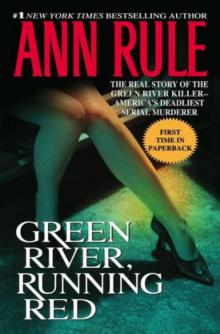 Green River, Running Red
Green River, Running Red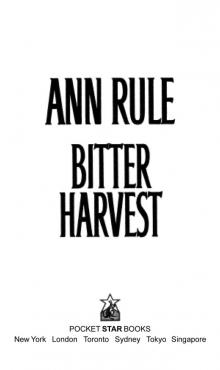 Bitter Harvest
Bitter Harvest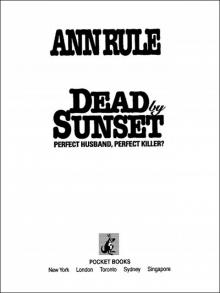 Dead by Sunset: Perfect Husband, Perfect Killer?
Dead by Sunset: Perfect Husband, Perfect Killer?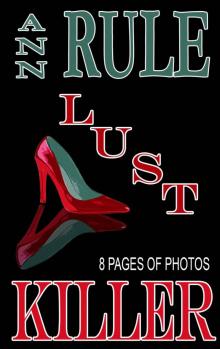 Lust Killer
Lust Killer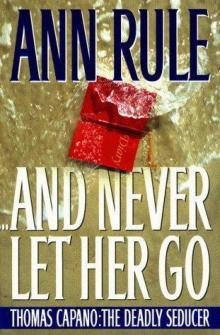 And Never Let Her Go: Thomas Capano: The Deadly Seducer
And Never Let Her Go: Thomas Capano: The Deadly Seducer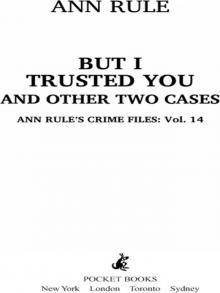 But I Trusted You and Other True Cases
But I Trusted You and Other True Cases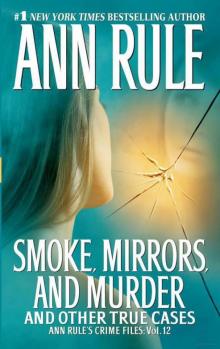 Smoke, Mirrors, and Murder and Other True Cases
Smoke, Mirrors, and Murder and Other True Cases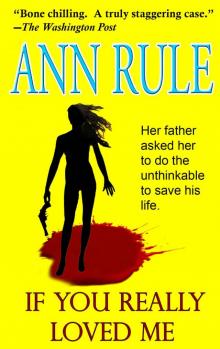 If You Really Loved Me
If You Really Loved Me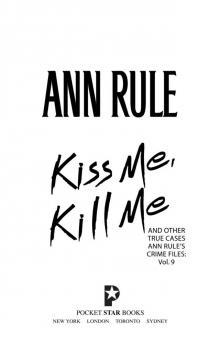 Kiss Me, Kill Me and Other True Cases
Kiss Me, Kill Me and Other True Cases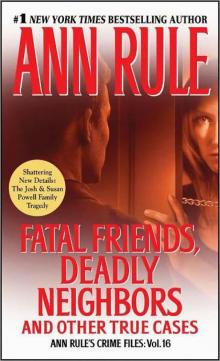 Fatal Friends, Deadly Neighbors and Other True Cases
Fatal Friends, Deadly Neighbors and Other True Cases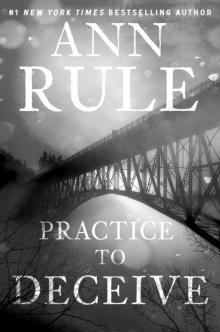 Practice to Deceive
Practice to Deceive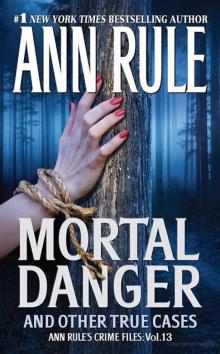 Mortal Danger and Other True Cases
Mortal Danger and Other True Cases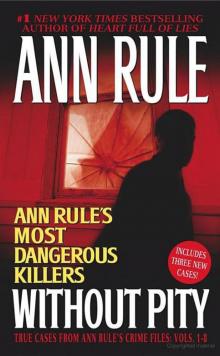 Without Pity: Ann Rule's Most Dangerous Killers
Without Pity: Ann Rule's Most Dangerous Killers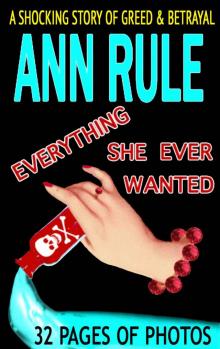 Everything She Ever Wanted
Everything She Ever Wanted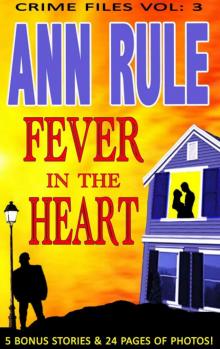 A Fever in the Heart and Other True Cases
A Fever in the Heart and Other True Cases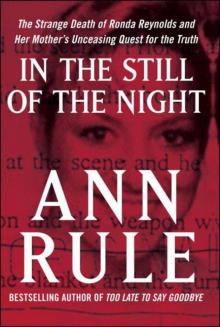 In the Still of the Night
In the Still of the Night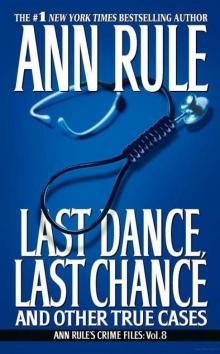 LAST DANCE, LAST CHANCE - and Other True Cases
LAST DANCE, LAST CHANCE - and Other True Cases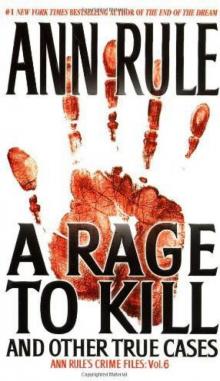 A Rage to Kill
A Rage to Kill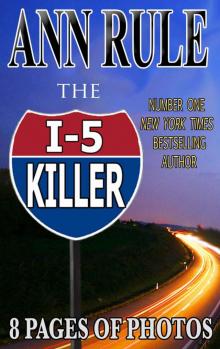 The I-5 Killer
The I-5 Killer The Stranger Beside Me
The Stranger Beside Me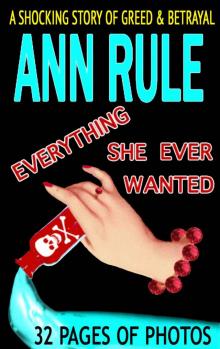 Everything She Ever Wanted: A True Story of Obsessive Love, Murder, and Betrayal
Everything She Ever Wanted: A True Story of Obsessive Love, Murder, and Betrayal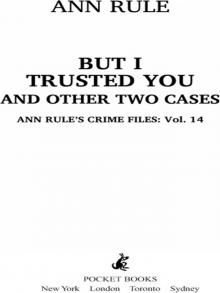 But I Trusted You
But I Trusted You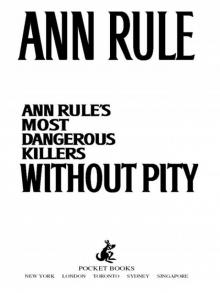 Without Pity
Without Pity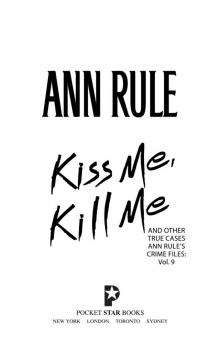 Kiss Me, Kill Me
Kiss Me, Kill Me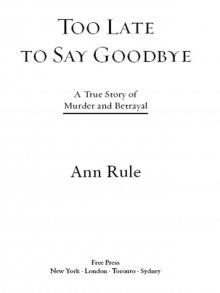 Too Late to Say Goodbye
Too Late to Say Goodbye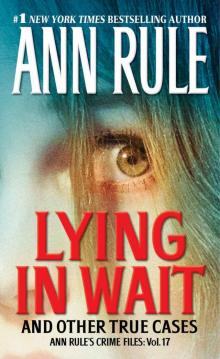 Lying in Wait
Lying in Wait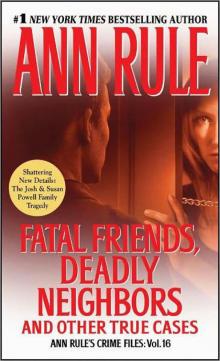 Fatal Friends, Deadly Neighbors
Fatal Friends, Deadly Neighbors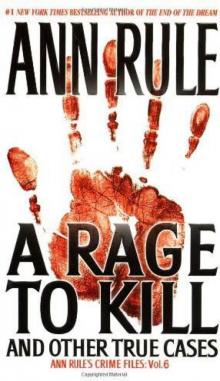 A Rage to Kill: And Other True Cases
A Rage to Kill: And Other True Cases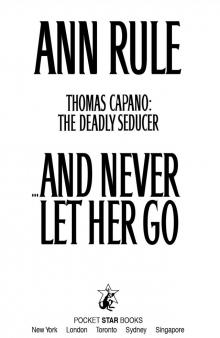 And Never Let Her Go
And Never Let Her Go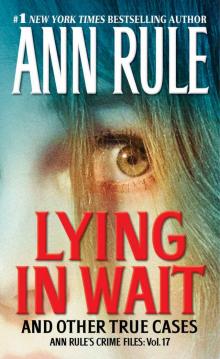 Lying in Wait Ann Rule's Crime Files Vol.17
Lying in Wait Ann Rule's Crime Files Vol.17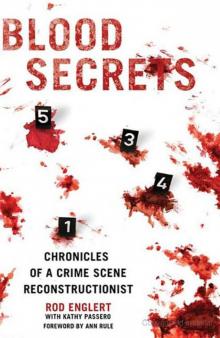 Blood Secrets: Chronicles of a Crime Scene Reconstructionist
Blood Secrets: Chronicles of a Crime Scene Reconstructionist No Regrets
No Regrets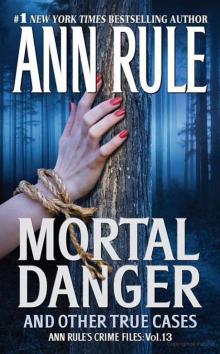 Mortal Danger
Mortal Danger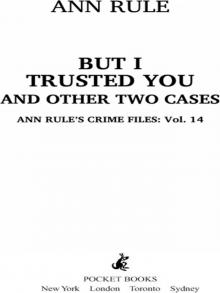 But I Trusted You: Ann Rule's Crime Files #14
But I Trusted You: Ann Rule's Crime Files #14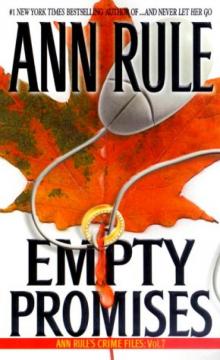 Empty Promises
Empty Promises Dead by Sunset
Dead by Sunset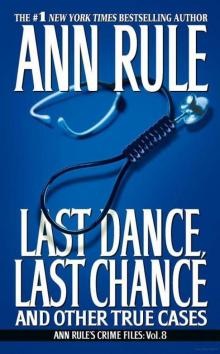 Last Dance, Last Chance
Last Dance, Last Chance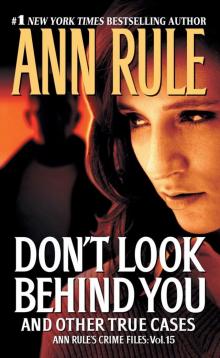 Don't Look Behind You
Don't Look Behind You